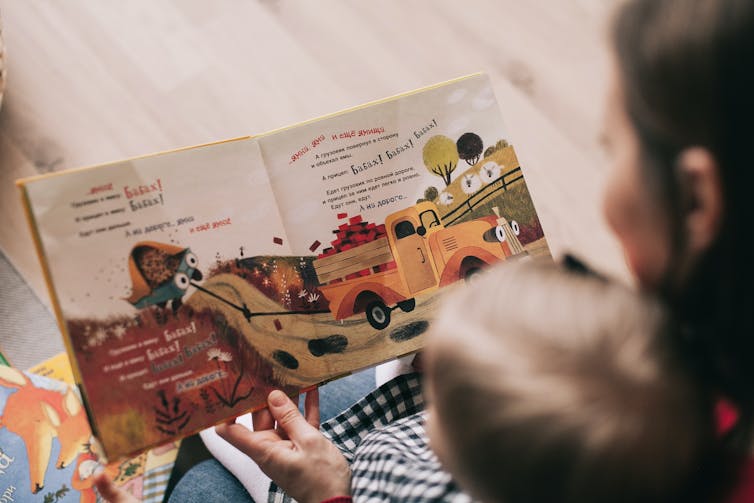
Early educators around the world feel burnt out and devalued. Here’s how we can help
South Australia’s royal commission into early childhood education led by Julia Gillard has released an interim report. The key recommendation is preschool for all three-year-olds (in a move similar to other states). But the report notes one of the critical considerations around this change will be the early education workforce. SA’s report comes as the […]

South Australia’s royal commission into early childhood education led by Julia Gillard has released an interim report. The key recommendation is preschool for all three-year-olds (in a move similar to other states). But the report notes one of the critical considerations around this change will be the early education workforce.
SA’s report comes as the Productivity Commission begins a wide-ranging inquiry into early childhood education and care in Australia.
As part of this, the commission is looking at the workforce. We already know there are high rates of turnover and burnout among early childhood educators. This makes it difficult for people to make a sustainable career in the sector.
It also makes it harder for services to find staff and for families to find a childcare place for their children.
Our new research looks at why early childhood educators are burning out and how we can fix this.
Educator turnover
Like other essential sectors the issue of burnout in early education has become more pressing since the beginning of the pandemic.
A 2021 a union survey of 4,000 educators revealed 73% planned to leave the sector within the next three years due to excessive workload, stress, low pay and status, lack of professional development and career progression.
It also found 82% “always” or “often” felt rushed when performing key caring tasks in the past month.
As of, 2022, educator job advertisements had doubled since the pandemic.
What is burnout?
Burnout is complex and can involve many things, including:
- ongoing physical and mental fatigue
- low sense of personal achievement
- emotional exhaustion
- depersonalisation, where you feel separate from your body or true feelings.
Burnout matters, because it harms educators’ wellbeing, the quality of children’s education, leads to educators leaving and then the ability of parents to work (especially women), and businesses to thrive.

Our new study
We wanted to understand what causes educator burnout, with the aim of helping policymakers and governments plan better support for the sector.
To do this, we reviewed 39 studies about the drivers of early childhood educator burnout from 13 countries, including Australia.
This type of a study – called a “systematic review” – is a powerful way for researchers to provide a full and clear summary of what we know about a topic.
What leads to burnout?
We found educator burnout can be driven by a range of factors.
Certain personal circumstances make an educator more likely to experience burnout. For example, those with lower household income, or those with increased family responsibility report higher feelings of burnout. This category includes those who are single, widowed, divorced or separated.
Younger, less experienced educators were particularly vulnerable to depersonalisation. Male educators were more likely to experience burnout than their female colleagues.
Educators said poor mental health (particularly depression and mental distress) played a crucial role in their burnout. More socially connected educators who are supported by friends, family and/or their faith were less likely to experience burnout.
How services treat staff matters
Educators from services where there was little or no focus on wellbeing were more likely to report burnout.
This included services with scarce emotional support strategies – such as being able to debrief with peers, or access counselling or coaching. These services also showed a lack of respect for educators’ work-life balance – such as demanding they do extra unpaid hours or not being flexible about leave for family reasons.
Educators discussed the fatigue caused by “surface acting”, where they had to pretend they were (or were not) experiencing certain emotions to please children, staff and parents. For example, an educator might be feeling exhausted and overwhelmed due to their workload, but they had to pretend to feel energetic and enthusiastic when engaging with children and families.
Poor professional relationships were associated with feelings of stress. This included feeling undermined by parents, teaching children with behavioural challenges, and negative relationships with colleagues and directors.
Funding and status
Our research showed educators experienced stress when they had few resources, but very high expectations to produce “quality” learning environments and experiences for children.
Some work was more likely to cause exhaustion, such as constantly trying to prove to authorities they were providing a “quality” service by collecting data.
Inadequate income can push educators to leave their positions. It can also lead to reduced motivation, and increase the number of sick days.
Educators’ feelings of burnout were also linked to a belief they had a low status in society. This was more pronounced if they taught younger children, or if they had been working in the sector a long time.
Both groups reported being affected by a lack of professional development and opportunities for promotion.

How can we reduce burnout?
Our review showed there are some effective ways to improve educators’ wellbeing, prevent burnout and keep them from leaving their jobs.
These include coaching, so educators can get feedback and develop their careers, peer mentoring so they know they are not alone and counselling, so they have an emotional outlet to reflect on their work.
If we want to keep educators in these vital roles we need to actively support them to stay.
The author acknowledges the work of Joanne Ng (lead researcher) and Courtney McNamara for their research on the systematic review.![]()
Marg Rogers, Senior Lecturer, Early Childhood Education, University of New England
This article is republished from The Conversation under a Creative Commons license. Read the original article.
